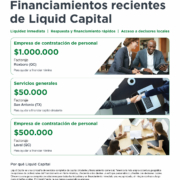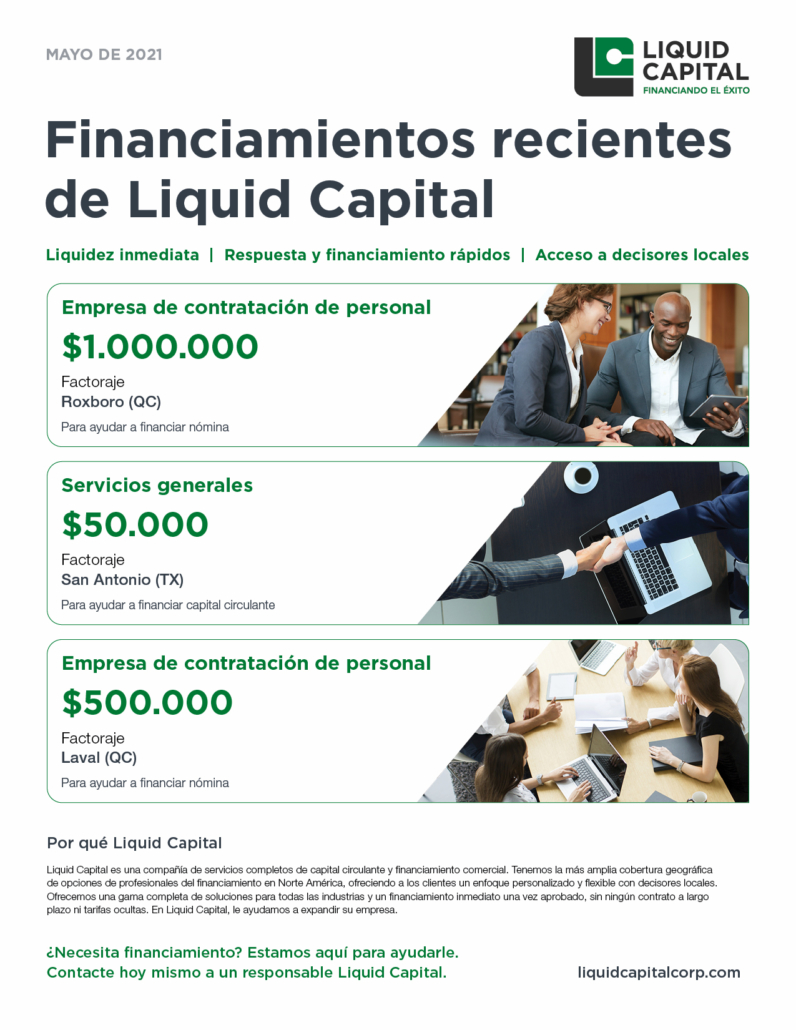Keep your company’s pandemic pivot from becoming a money pit
Like many companies these days, you may have gone through your own pandemic pivot. Make sure that strategy helps increase revenue, not expenses.

Plenty of businesses managing the wider supply chain ebb and flow evolved to meet dynamic consumer demands amidst the coronavirus pandemic. But you might find that juggling new revenue streams is more complicated than you thought. Liquid Capital presents a guide to how you can boost profitability while continuing to scale your business and meet customers’ needs.
Boost efficiency with smart tools and processes
One way to ensure your new business strategy remains profitable is by increasing efficiency — whether it be a new fleet of vehicles, a new product line, supplemental services or a shift in your operations and personnel. The right combination of smart tools and hyper-efficient processes can help you preserve funds while ensuring your customers stay happy.
Manage assets with the help of technology
Tracking inventory is a significant challenge when you’re trying to move products quickly. But equipment ID tags and custom labels can help your team identify assets in a super-quick way. With easily readable print or scannable barcodes, less time is wasted scouring the shelves for the right item to ship to your consumer.
Whenever possible, automate
Automating as many steps in your supply chain as possible is another way to enhance efficiency. Supply chain automation is a popular tactic for big businesses — and especially those impacted by COVID-19.
While implementation comes with a price tag, it can be cost-effective in terms of revenue increases over time. Budgeting for automation now can mean fewer bumps in the road if another pandemic—or any other industry upset—threatens your business model in the future.
Keep your remote teams productive during a pandemic pivot
From coordinating delivery drivers to overseeing customer service reps, you likely have many work-from-home staff to manage. Even if telecommuting is new to you and your team, there are ways to make the process easier to stomach.
Overall, keeping your team accountable requires a willingness to adapt and roll with the punches. Outlining your expectations and following work at home best practices is a good start. Using job scheduling software, for instance, can be a boon. An app like QuickBooks provides text or email reminders, time tracking and estimation, GPS tracking, and even has drag-and-drop capability. From there, personally checking in with your people can reduce turnover and maintain motivation.
Offering more on-the-job perks is a great way to incentivize your team, too. Many companies are providing free services like coaching, fitness and even psychotherapy to support their workforce. Consider what types of freebies your team would appreciate and consider the potential payoff for implementing such offerings.
Consider outsourcing where feasible
You might not think that hiring more people could actually save you money. But when it comes down to it, investing in your workforce is one way to boost your bottom line. Whether you’re aiming for a lower turnover of existing staff or plan to delegate tasks to save time, outsourcing can support your profitability goals.
For example, instead of hiring another part-time employee to work on your website, you could hire a freelance developer to tackle the project. If your company needs rebranding to suit your pandemic pivot, a freelance marketer can create a package that works for your budget.
Not only does hiring contract workers make sense for your short-term payroll, but it also helps you avoid personnel costs. Generally, businesses don’t pay unemployment or benefits for independent contractors. This means you don’t have out-of-pocket costs beyond the scope of the project you’re hiring for.
Of course, both pros and cons exist when it comes to hiring independent contractors. But you might find that the balance weighs in favor of sourcing freelance help.
Continuing to maintain profitability post-coronavirus boom can be challenging. Even if your business has done well by scaling to suit customers’ needs during the shutdown, the evolving economy is sure to bring more changes. By implementing smart tech and creatively managing your team, you’ll be poised to remain profitable well into the future.
Liquid Capital provides business funding with heart. To learn more about how invoice factoring can help you with working capital before, during or after your pandemic pivot, please get in touch today.
Photo via Rawpixel


















